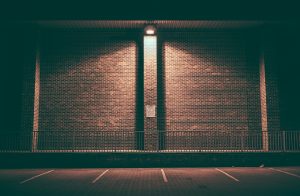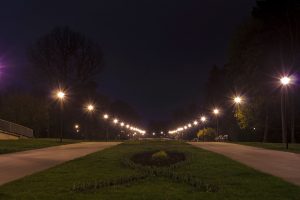Landscape lighting design guide
If you are getting bored of your garden, patio or deck, then it might be time to upgrade your garden or any other outdoor area. And the key to interesting, enchanting and wow-worthy design might just be landscape lighting. There are literally hundreds of different methods how to achieve efficient landscape lighting; so in this post, we will be looking at some of these methods and ways, how you can create a truly awe-inspiring look for the outdoor areas around your home.
We’ll start with the basics.
A proper landscape lighting design works as a synergy between the lights and all the objects and structures that are located in your landscape. Just focusing on outdoor lights will make you overlook other potentially great and important aspects of design. In other words, you must consider all the physical objects when you are picking lights for your landscape, as well as consider all lighting options when you are thinking about all different parts of your outdoors landscape, even your backyard, patio or deck.
Synergy aside, you should aim to have a clear vision of the landscape lighting design’s end result, because setting up beautiful lights and possibly eye-catching things around your landscape might get you a truly eclectic and messy- looking outcome. And it probably isn’t what you intended. Even if you have done some research to figure out how you want your landscape to look, it will be well worth it in the end, because sooner or later you will come up with a design that you like and that would look interesting to spectators, too. For example, you might want to make your yard look more romantic, ore fairytale-like, more festive, or generally just impressive. These all are concrete goals that will help you pick the right design details when you are shopping around for lights or objects to put into your landscape.
Once you have the general idea of what you want, we can now take a look at a few specific methods that landscape designers use to create landscape lighting design. Of course, nobody can tell you what exactly should you do or how to do it, but there are many concepts that will help you finalize your dream landscape design. Plus, you will also learn some practical tips for creating changes to your landscape lighting.
Ambient lighting or spotlights, know the difference!
These two terms are used a lot in the landscape lighting business. Ambient lighting is all about creating the general mood by letting the light waves smoothly cover a larger area. Some parts of the landscape might still look darker, but that’s not really a concern as the main goal is to foster a certain atmosphere in your outdoor space. Spotlights, on the other hand, are all about highlighting the details and showcasing those parts of the landscape that you want to stand out. Of course, you can also mix these two approaches, because in most cases creatively blended ambient atmosphere lighting and accent spotlights will result in amazing landscape design.
Lighting up, down, or across?
Up-lighting means that you aim your light fixtures upwards be it to light a house or a tree. This technique is mainly used to emphasize the build or texture of any given objects situated in a landscape. Down-lighting is more about creating an ambiance aka a romantic setting that reminds of a moonlit landscape. But cross-lighting will remove all shadows from your light design, creating a uniform and brightly lit feel. Monuments and trees look especially astounding after being cross lit.
There’s nothing shady about shadows!
Spotlighting is a perfect method for constructing fantastic shadowy figures on walls and house facades. Shadowing is a true form of lighting art, because there is an endless array of different outcomes when you are lighting different objects. Some of the most typical things used for shadowing include statues, trees, and fountains, so if you have any of these objects or other ones, that could look good when using for shadowing, go ahead and try it. Play around with the angles to find the most suitable shadow formation and enjoy the results.
 Light up the hardscape
Light up the hardscape
Exposed brick walls, cobblestone fence, you name it: almost every hardscape structure is just sitting there and calling out for being used for lighting design. Here you should aim to use LED lights from outdoors LED strip lights to silicone cased LED lamps. These products are the best for keeping the moisture out and working in virtually any conditions.
Expose the depth
A fatal rookie mistake when it comes to landscape lighting is not thinking through the depth of your landscape because this way you might end up with a bleak outcome. But this mistake can be easily avoided since adding depth to your landscape isn’t that difficult. Usually, the lack of depth is created by only illuminating the house or one to two objects in the whole landscape. So try to boost depth intensity by lighting up trees and plants in the garden. You’ll be amazed at the difference it will create!
Day & Night
Lightscapes fully bloom only in the nighttime, but it’s also important to keep in mind that people will see the necessary equipment for landscape lighting design during the daytime, too. Landscape lighting amateurs buy lighting fixtures, which just don’t look good in a landscape and therefore communicate the impression of being unnecessary foreign objects in the landscape when it is light outside. But Smart landscape designers blend the lighting equipment seamlessly into the whole concept, so the lamps cannot be seen during the day and provide gorgeous lighting when the dark falls. This will make sure that people can appreciate your landscape design no matter the time of the day.
 Guide my way, path lighting!
Guide my way, path lighting!
Path lighting is the ideal way how to use lanterns or other light sources to make your garden path shine throughout the evening. Illuminating a path is both aesthetically pleasing and practical. If you are expecting visitors who aren’t familiar with your garden or even driveway, they might stumble or fall in the dark. But adding “miniature lighthouses” aka path lighting to guide their way will make it easier for them to walk, as well as will make a stunning first impression.
Avoid light pollution!
Yes, there is such a thing as light pollution. The term in the context of landscape lighting refers to unnecessary light making its way into the house or other areas that are best left in dark during the night. Luckily, it is easy to fix any light pollution problem that you have accidentally created. Just run a couple of tests during all times of day, including when it is dark outside, to see if the angles of the lights don’t bother you and re-position the lights as needed. Additionally, aim for lower wattage lighting, so your electricity bill doesn’t go through the roof. And you can even apply shields to the bulbs of the lights, which will enable you to have concentrated light and direct the illumination exactly where you want it the most.



